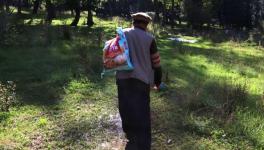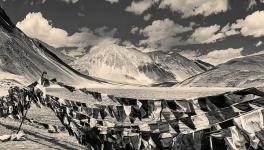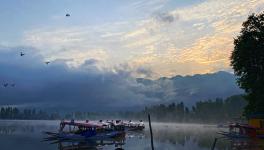Srinagar: Fading Contours of a City at Dawn
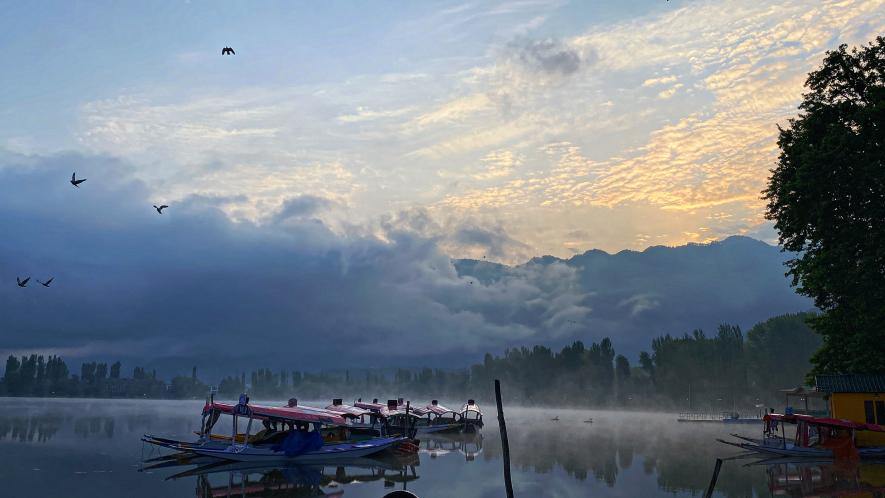
Srinagar: The smoke from the baker’s chimney fills the misty air. The muezzin’s first call to prayer brings an end to the night’s quiet. It is still hours before the sun brushes the city into a pumpkin orange hue. Even as these are the hottest days of the year, a sweet chill accompanies the early mornings of Srinagar, the summer capital of Jammu and Kashmir.
The asynchronous Azaans echo the valley but the attendance in the mosques is getting thinner, something that worries the elderly. By 5 am, the morning prayer concludes but the city reverberates with Awrad e Fatih, a hymnic sequence of Quranic verses that have remained a popular feature in the valley’s mosques since the 14th century.
The rest of the city wakes up much later in the morning, which is seen as a departure from the tradition of early rising.
The boulevard of Dal Lake is one of the favourite routes for early risers, some of whom come from different parts of the city for their morning walks, running, and cycling. Some are dwellers of Dal Lake, which to all of them is most delightful in the morning hours. In the interiors of Dal Lake, for whom life begins early, a floating vegetable market is abuzz with traders gathering the daily stock. It is one of the leading suppliers of vegetables to the entire city.
The water in Dal is not pristine anymore but in an awful state.
“It is dying. We used to drink from it but now we fear that even touching it could cause disease,” a local Mushtaq says.
Over the years, Dal has become a symbol of Kashmir’s booming tourism industry. The houseboats on the lake are quite popular with tourists and are likely to be for some more years before they sink into oblivion in the want of repair or reconstruction. Both have been banned due to their contribution to water pollution, something the lake dwellers decry as an ‘injustice’.
The Jhelum, which flows like a serpent, divides the city into two halves and lofty Chinars like emeralds adorn it. There are some structures like the new government secretariat that are easily recognisable from the top. From the hillock, the rest looks like a mosaic of flowers in a pond. It is pleasant from the above but, most things in Kashmir look beautiful from a distance. The landscape of the city, which is expanding from all sides, has changed significantly.
“The city has moved far from the traditional architecture. We are more into internationalism now,” Sadaf ul Islam, Assistant Professor, School of Architecture (Kashmir), says.
Sadaf says the reason is both political and economic, adding that the city is fast losing its character due to unplanned construction outside the old Downtown area.
The boulevard leads to some of the major tourist attractions including the Mughal Gardens. Scores of new hotels and guest houses, and home stays have come up in the last few years to host the tourist arrivals and after two years of slump, this year has been rewarding. Tourism is one of the key sectors that run the livelihood of thousands of residents. Even as agriculture and especially horticulture is the economic backbone of Jammu and Kashmir, there is much focus on tourism. The government has made significant contributions with a record allocation of Rs 786 crores this year.
But, despite this year’s good season fewer foreigners travel to Kashmir due to travel advisories, especially after the abrogation of Article 370 and 35 A, carried out by the Bhartiya Janata Party (BJP) led government on August 5, 2019.
Since last year there has been an unprecedented rise in these security installations due to the rise in violence. Over 600 persons including the militants, security personnel, and civilians have been killed but, the situation worsened due to a spate of targeted killings of civilians and policemen with Srinagar returning as one of the hotspots of violence after a decade of a relative lull.
The surge in violence has not deterred Indian or domestic tourists from visiting Kashmir.
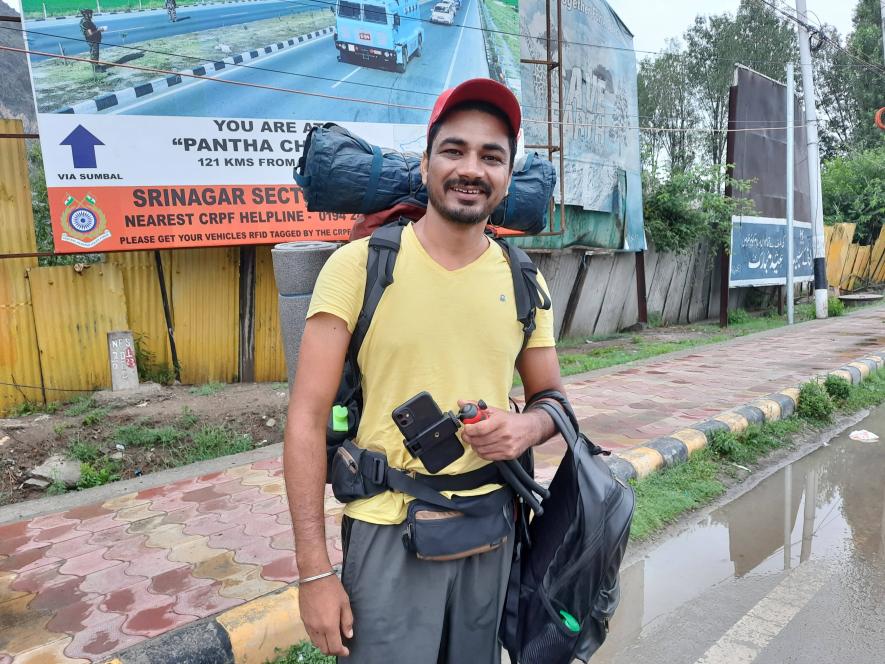
Aman Pal Singh
“The travel to Kashmir is trending on YouTube. It is a good experience for those who enjoy travel and then they earn from it too,” a V-blogger Aman Pal Singh says.
Aman reached Srinagar on a solo trip from his Shergarh village in Punjab. He traveled to Ladakh first and then planned to use the Srinagar-Jammu highway to return. Like Aman, many vloggers have been traveling to the city and most of them in their videos ask locals about how they feel after the abrogation of Article 370. “The situation seems to have improved,” many conclude.
Some wait till evening to click a picture with a clock tower in the city’s Lal Chowk – after Moscow’s Red Square. The clock tower or so vastly called Ghanta Ghar has been renovated and illuminated with colour lights from the Indian flag.
Around 5 am, the stillness of morning, the sound of oars that drives Shikaras in Dal lake, the breeze and the songs from a variety of birds rejuvenates everyone, perhaps the reason why Dr Yasir Rather, who is associate professor, Institute of Mental Health and Neurosciences (IMHANS), suggests early morning walks to many of his patients.
Srinagar city is one of worst violence-hit cities in the region. Three decades of war and insurgency has battered it and health experts have warned of a mental health crisis due to the conflict. The situation has only worsened in the aftermath of the outbreak of Covid-19 pandemic.
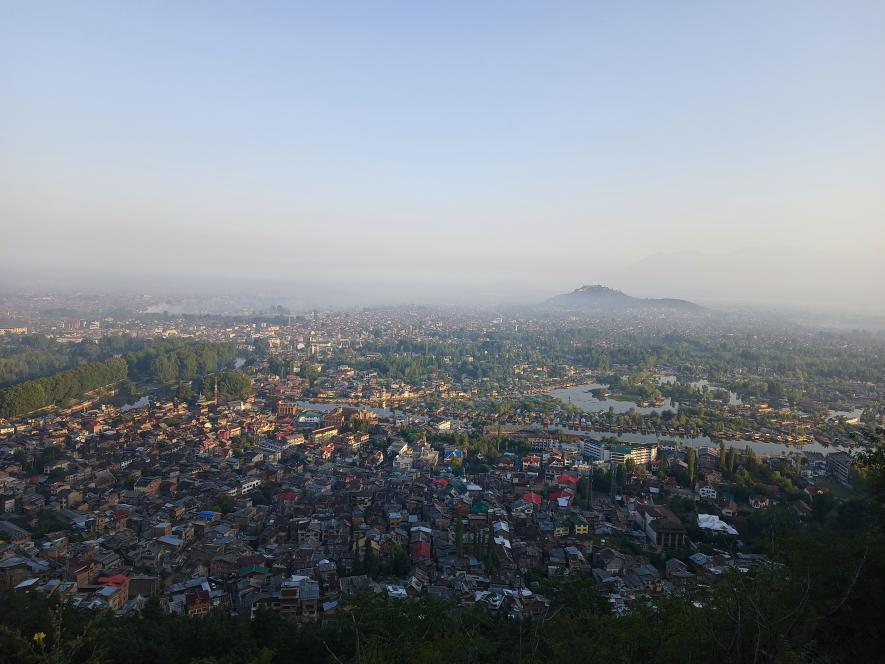
“Early morning walk really helps. We advise our patients to go for morning walks and any sort of physical activity for at least half an hour or an hour,” Dr Rather says.
Before the sun emerges from the Zabarwan peaks, the eastern wall of the city, a few groups make a climb to a city hillock – atop which is located a prominent Hindu temple of Adi Shankaracharya, an 8th century Indian scholar. “I have been coming here every day for more than 25 years,” a slow solitary climber in his early 50’s says. He was also once a part of a group from the downhill Sonwar neighbourhood. “They trekked like tigers but I don’t advise it as most of them have undergone knee surgeries,” he says wryly.
By 6 am, the security forces sensitise all areas by sending Road Opening Party (ROPs) to make way for larger military convoys. The security checkpoints and bunkers have become an elemental part of the cityscape. By 8 am the grinding noise of the busy streets reaches everyone.
Get the latest reports & analysis with people's perspective on Protests, movements & deep analytical videos, discussions of the current affairs in your Telegram app. Subscribe to NewsClick's Telegram channel & get Real-Time updates on stories, as they get published on our website.










